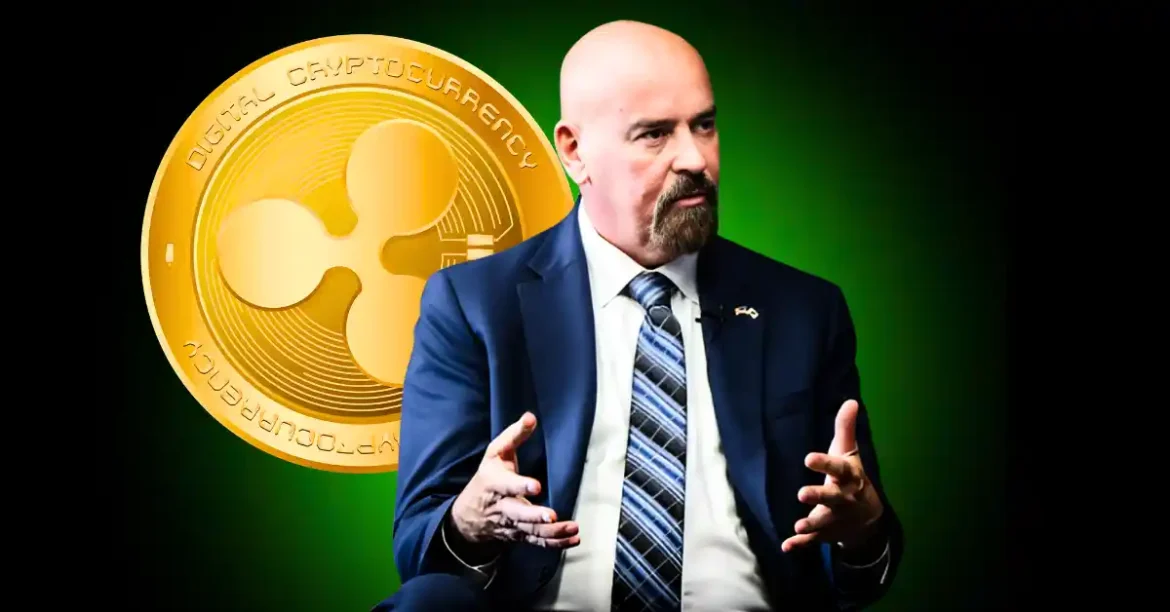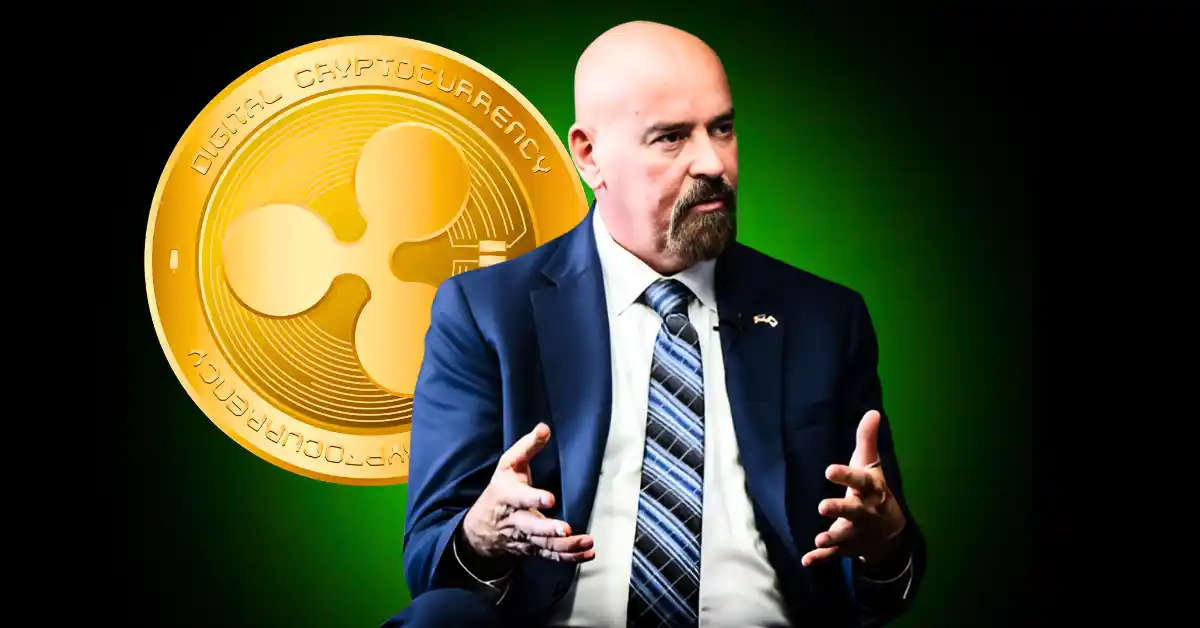The cryptocurrency world is no stranger to drama, legal battles, and market volatility. In recent weeks, Ripple (XRP) has found itself entangled in a controversy involving Linqto, a private equity platform, raising concerns among investors and prompting clarifications from Ripple’s CEO, Brad Garlinghouse. This report delves into the details of the Linqto situation, its potential impact on XRP, and the broader implications for Ripple as a company.
Linqto: A Platform Under Scrutiny
Linqto operates as a platform providing liquidity for private securities markets, allowing investors to access pre-IPO shares of companies like Ripple. Recently, Linqto has come under intense scrutiny, facing investigations by both the U.S. Securities and Exchange Commission (SEC) and the Department of Justice (DOJ). These investigations reportedly stem from allegations of securities fraud and deceptive sales practices, including the sale of shares to non-accredited investors and potential market manipulation.
Adding fuel to the fire, Gene Zawrotny, Linqto’s former Chief Revenue Officer, has filed a lawsuit against the company, accusing it of fraud, market manipulation, and making false statements about its user base. Zawrotny alleges that Linqto inflated its user numbers, claiming 750,000 users when the actual number is closer to 10,000, with only 30% being accredited investors. This discrepancy raises serious questions about the platform’s transparency and its adherence to securities laws.
The allegations against Linqto have significant implications for the broader private equity and cryptocurrency markets. The platform’s business model relies on providing liquidity to private securities, a niche that has gained traction in recent years as more investors seek exposure to pre-IPO companies. However, the allegations of fraud and market manipulation undermine trust in the platform and raise concerns about the regulatory oversight of such markets.
Ripple’s Response: Distancing and Clarification
As the Linqto situation unfolded, concerns rippled through the XRP community. Investors who believed they had purchased Ripple shares through Linqto began to worry about the legitimacy of their investments and the potential implications for Ripple itself.
In response, Ripple CEO Brad Garlinghouse issued a firm statement clarifying Ripple’s involvement with Linqto. He emphasized that Ripple has no direct business relationship with Linqto and has never sold shares directly to the platform. Garlinghouse explained that Linqto acquired any Ripple shares through secondary markets, meaning they were purchased from existing shareholders, not directly from Ripple Labs.
Garlinghouse also took to social media to differentiate between XRP tokens and Ripple shares. This distinction is crucial because many investors mistakenly believed that owning XRP was equivalent to owning equity in Ripple Labs. Garlinghouse clarified that XRP is a cryptocurrency, while Ripple shares represent ownership in the company. This clarification aimed to alleviate concerns that the issues surrounding Linqto would directly impact the value or functionality of XRP.
Despite Ripple’s efforts to distance itself from Linqto, the controversy has undoubtedly stirred unease within the XRP community. The primary concern revolves around the potential loss of investment for those who purchased Ripple shares through Linqto. If Linqto faces legal repercussions or bankruptcy, these investors could see their investments significantly devalued or even lost entirely.
The XRP Community and Investor Concerns
Prominent XRP advocate and attorney John Deaton has warned Linqto users of potential losses, estimating that they could face losses of up to 400%. This stark warning highlights the severity of the situation and the potential financial risks for investors who relied on Linqto’s platform.
Moreover, the Linqto situation has amplified existing anxieties surrounding regulatory uncertainty in the cryptocurrency space. The SEC’s ongoing scrutiny of digital assets and the potential for enforcement actions create a climate of fear and uncertainty for investors.
The regulatory landscape for cryptocurrencies is complex and evolving. The SEC has taken a aggressive stance on digital assets, arguing that many cryptocurrencies should be classified as securities and subject to the same regulatory oversight as traditional securities. This stance has led to a series of high-profile enforcement actions against companies like Ripple, Coinbase, and Binance.
For investors, the regulatory uncertainty creates a challenging environment. The potential for enforcement actions and legal battles can lead to market volatility and uncertainty about the future of digital assets. This uncertainty is compounded by the lack of clear regulatory guidance, leaving investors to navigate a complex and rapidly evolving landscape.
Ripple’s Broader Legal Landscape
The Linqto controversy emerges against the backdrop of Ripple’s years-long legal battle with the SEC. In December 2020, the SEC sued Ripple and two of its executives, alleging that XRP was an unregistered security and that the company had conducted an illegal securities offering.
While Ripple has achieved some victories in the case, including a ruling that XRP is not inherently a security, the legal battle is far from over. The SEC recently agreed to a settlement with Ripple, which involves Ripple paying a reduced fine of $50 million. However, the underlying issues surrounding XRP’s regulatory status remain unresolved.
Furthermore, Ripple has decided to drop its cross-appeal against the SEC, signaling a potential shift in its legal strategy. This decision comes after a New York judge blocked the company’s second attempt to settle the case for $50 million, suggesting that Ripple is seeking to put the legal battle behind it and focus on its future growth.
The legal battle with the SEC has been a significant challenge for Ripple, with implications for the broader cryptocurrency market. The outcome of the case could set a precedent for how other digital assets are regulated, potentially shaping the future of the industry.
Ripple’s Strategic Pivot: Stablecoins and Beyond
As Ripple navigates the legal and regulatory landscape, the company is actively pursuing new avenues for growth and innovation. One significant development is Ripple’s push into the stablecoin market. Ripple plans to launch its own stablecoin, RLUSD, which will be pegged to the US dollar and backed by reserves of US dollar deposits, short-term US government securities, and other cash equivalents.
The move into stablecoins represents a strategic pivot for Ripple, allowing the company to diversify its offerings and tap into the growing demand for stable digital currencies. However, some analysts have raised concerns that Ripple’s stablecoin efforts could potentially cannibalize the already limited usage of XRP.
Beyond stablecoins, Ripple is also exploring other areas of growth, including expanding its cross-border payments solutions and building new applications on the XRP Ledger. The company’s focus on innovation and strategic diversification is crucial for its long-term success in the rapidly evolving cryptocurrency market.
The cryptocurrency market is highly competitive, with numerous companies vying for market share and investor attention. Ripple’s ability to innovate and adapt to changing market conditions will be critical for its long-term success. The company’s strategic pivot into stablecoins and other areas represents a proactive approach to navigating the challenges and opportunities of the cryptocurrency market.
The Future of Ripple and XRP
The Linqto controversy serves as a reminder of the risks and uncertainties inherent in the cryptocurrency market. While Ripple has taken steps to distance itself from the situation and reassure investors, the incident highlights the importance of due diligence and careful consideration when investing in digital assets.
Looking ahead, Ripple’s future will depend on several factors, including the outcome of its ongoing legal battles, its ability to successfully execute its strategic pivot into stablecoins and other areas, and the broader regulatory landscape for cryptocurrencies.
Despite the challenges, Ripple remains a significant player in the cryptocurrency space, with a strong track record of innovation and a growing ecosystem of partners and developers. As the company continues to navigate the complexities of the market, its ability to adapt and innovate will be crucial for its long-term success.
Navigating the Crypto Maze: A Call for Vigilance
The Ripple-Linqto saga underscores a vital lesson for all crypto enthusiasts: vigilance is paramount. The crypto world, with its disruptive potential and rapid evolution, is also fraught with complexities and risks. Regulatory ambiguities, potential fraud, and market volatility can create a challenging landscape for investors. Therefore, thorough research, a critical mindset, and a clear understanding of the risks involved are essential for navigating this exciting yet precarious space.
Investors should approach the cryptocurrency market with caution, conducting thorough research and due diligence before making investment decisions. It is also important to stay informed about regulatory developments and market trends, as these can have a significant impact on the value and viability of digital assets.
Additionally, investors should diversify their portfolios to spread risk and mitigate potential losses. This can involve investing in a range of digital assets, as well as traditional assets, to create a balanced and resilient investment strategy.
In conclusion, the Ripple-Linqto controversy highlights the complexities and risks of the cryptocurrency market. While Ripple has taken steps to distance itself from the situation, the incident serves as a reminder of the importance of vigilance and due diligence in the crypto space. As the market continues to evolve, investors must stay informed and adaptable to navigate the challenges and opportunities of this dynamic and rapidly changing landscape.





